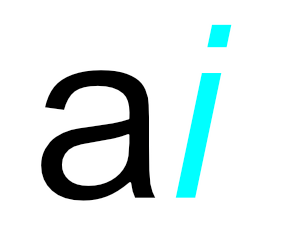Originally discussed on Andicanhelp Live – exploring the trends and frameworks behind building your business online

OpenAI recently released the most comprehensive study of consumer AI usage to date, analyzing over 1.1 million ChatGPT conversations from their 700 million weekly active users. The findings reveal fascinating insights about how we’re actually using AI in our daily lives—and raise important questions about the future of this technology in commerce and society.
The Numbers That Matter
The study represents the most comprehensive analysis of actual consumer AI use ever released, covering ChatGPT’s growth to 10% of the world’s adult population as of July 2025. Here are the key statistics that business owners and consumers should know:
Usage Categories:
- 49% “Asking” – Product research, learning, seeking advice
- 40% “Doing” – Content generation, project drafting
- 11% “Expressing” – Personal reflection and creative work
Work vs. Personal Use: Only 30% of conversations are work-related, with 70% being personal use – a significant shift from earlier adoption patterns.
Demographics:
- Female users have caught up to and slightly surpassed male adoption rates
- Writing makes up 42% of work-related messages, with more than half coming from management and business occupations
- Work usage drops dramatically after age 66
The “Basic Right” Paradox
OpenAI claims that “access to AI should be treated as a basic right—a technology that people can access to unlock their potential and shape their future.” Yet their business model relies on limited free access and increasingly expensive premium tiers.
This creates a critical tension: if AI access is truly a basic right, should there be premium pricing that potentially excludes lower-income users and small businesses? With massive public investments flowing into AI infrastructure through taxpayer dollars, questions arise about whether public funding should guarantee public access.
The Hidden Costs of AI Infrastructure
The environmental and economic reality behind AI is staggering. Data centers supporting ChatGPT and similar services require:
- Trillions of dollars in infrastructure investments
- Massive energy consumption straining electrical grids
- Significant water usage for cooling systems
- Specialized hardware creating supply chain dependencies
Communities near major AI data centers in Pennsylvania, Michigan, and other locations report construction dust, light pollution, and contaminated drinking water. This raises ethical questions about whether we should be entitled to use technology that’s currently detrimental to local communities.
Critical Limitations Business Owners Must Understand
Despite the impressive usage statistics, it’s crucial to understand what ChatGPT and other large language models actually are: sophisticated word prediction engines, not thinking machines.
Key Limitations:
- Hallucination risks – AI can confidently present false information
- Inconsistency issues – Maintaining style and logic across iterations is problematic
- Context loss – Cannot reliably retain, reinterpret, and build upon previous responses
- No genuine reasoning – Lacks the logical framework humans possess for strategic decisions
Business Applications to Approach Carefully:
- Strategic planning and go-to-market strategies
- Financial analysis and investment decisions
- Code architecture and software engineering
- Legal and compliance guidance
The Emergence of Answer Engine Optimization (AEO)
With nearly 80% of conversations focused on practical guidance, seeking information, and writing help, we’re seeing the rise of Answer Engine Optimization—optimizing content for visibility in AI responses rather than traditional search results.
This represents a fundamental shift in how businesses should think about content strategy and customer acquisition in an AI-driven world.
Looking Forward: Predictions and Preparations
The current AI landscape suggests we’re in a bubble phase, with massive investments seeking returns that may not materialize at current adoption and pricing levels. I predict an “uneven pop” where:
- Resource-rich companies will weather market corrections and build comprehensive AI ecosystems
- Smaller businesses will face increased pressure to partner or invest early in AI capabilities
- Infrastructure consolidation will favor companies that can balance compute resources with sustainable power solutions
- Nuclear-powered data centers may become the norm for powering high-demand AI services
The Bottom Line for Business
While ChatGPT and similar tools offer genuine utility for research, initial content generation, and brainstorming, they should be treated as sophisticated assistants, not decision-makers. The key is maintaining human oversight, critical thinking, and understanding the technology’s limitations.
As AI adoption continues its rapid growth, businesses that can effectively leverage these tools while avoiding over-reliance will have significant competitive advantages. The question isn’t whether AI will impact your industry—it’s how prepared you’ll be to use it responsibly and effectively.
Study References
OpenAI Article: “How people are using ChatGPT” – Available at OpenAI.com
Academic Paper: Chatterji, Aaron, et al. “How People Use ChatGPT.” NBER Working Paper No. 34255, National Bureau of Economic Research, September 2025. Available at NBER.org
This analysis was originally presented on Andicanhelp Live, where we break down the trends and frameworks behind building your business online. For more insights on technology and commerce strategy, visit Andicanhelp.com or follow @andicanhelp on social media.
Want to discuss these findings further? The conversation continues on our podcast, released every Tuesday with strategy, tactics, and results for your next business initiative.



